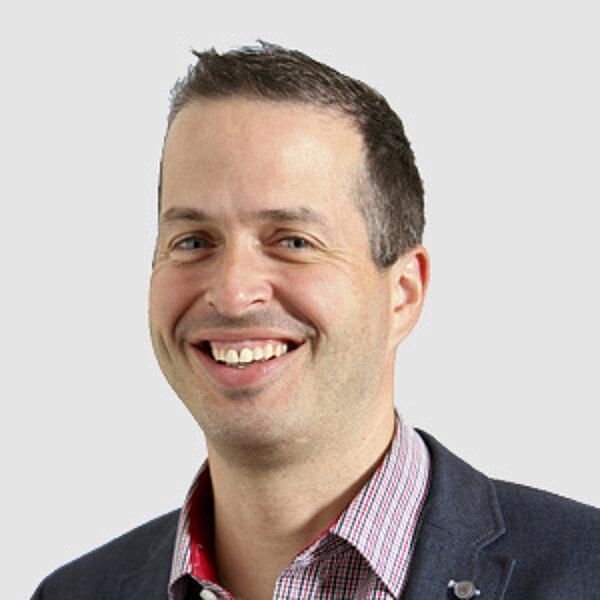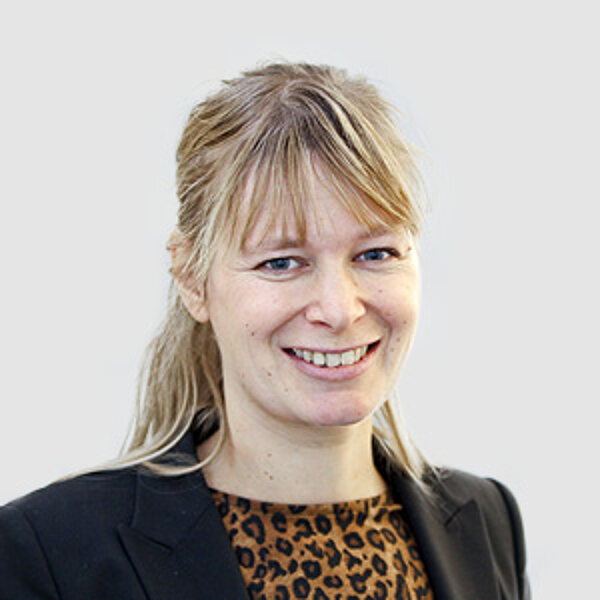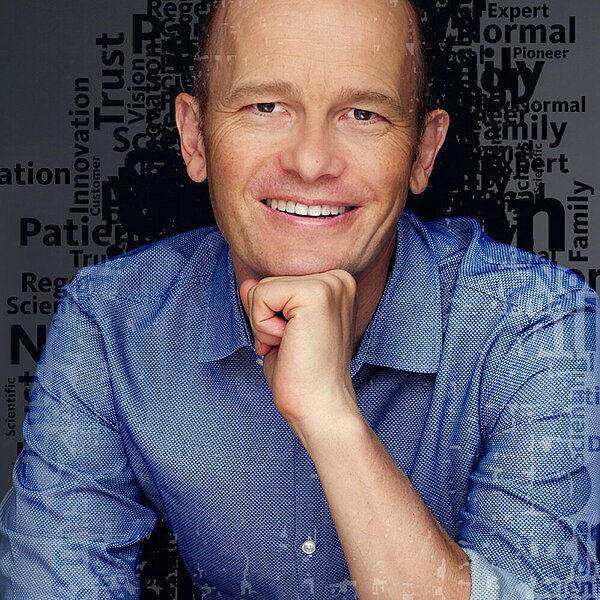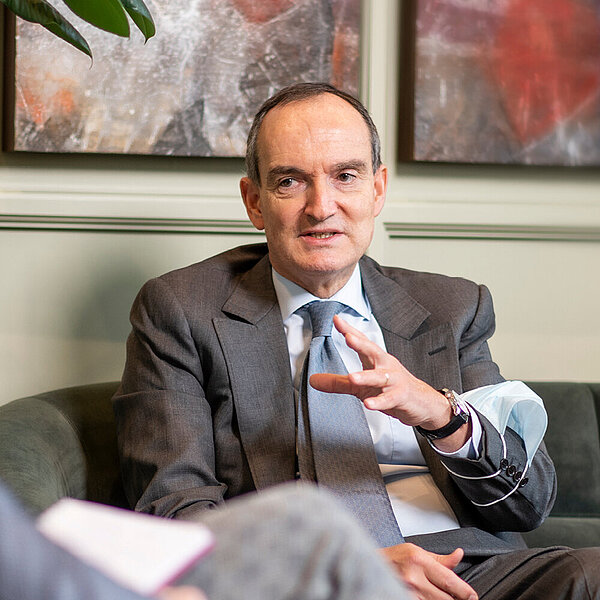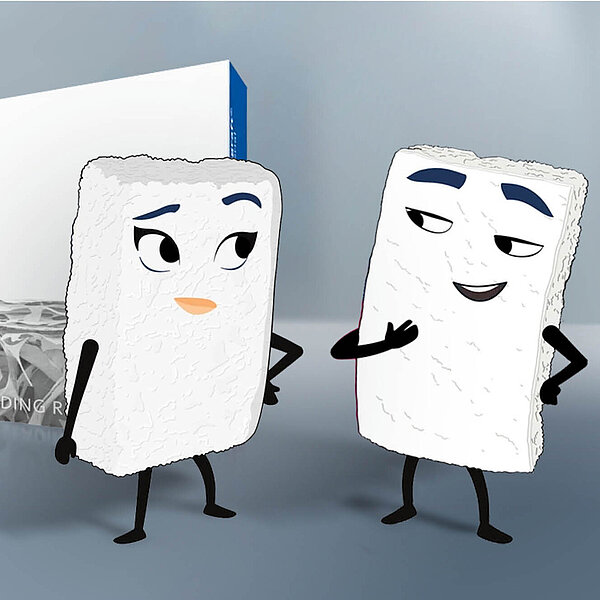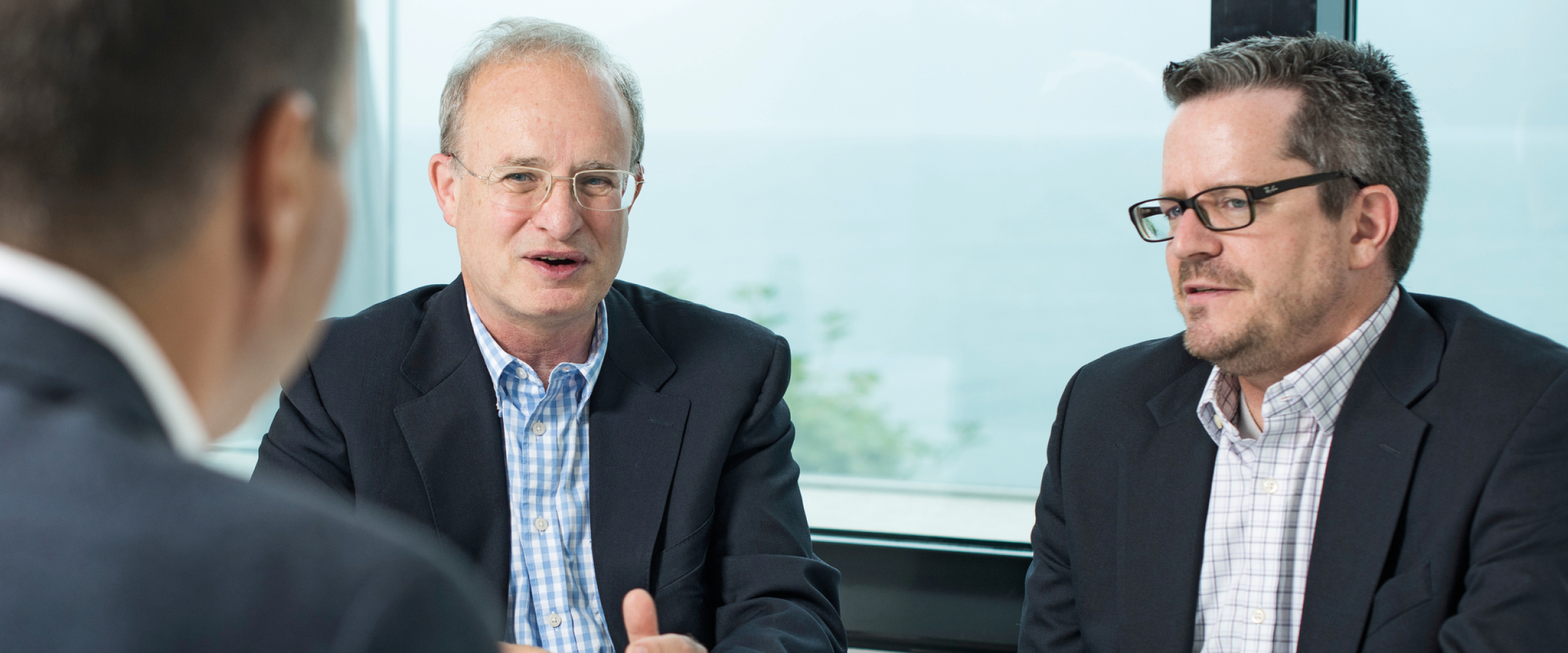
“It’s not only science. There is a lot of art involved.”
Geistlich invested heavily to develop its latest product, the 3D collagen matrix Geistlich Fibro-Gide. Dr. Terance Hart and Dr. Mark Spilker, Chief Scientific Officer, talk about innovation, research pathways and strategic collaborations.
Geistlich Fibro-Gide® is the latest product from Geistlich for regenerative dentistry. Why does Geistlich want to provide a new therapeutic solution?
Dr. T. Hart: We wanted to offer a product that regenerates soft tissue while also maintaining volume and providing excellent mechanical properties. Several of our key partners from universities and dental clinics highly appreciated the idea of a volume-stable collagen matrix that could be used for indications such as soft tissue augmentation around implants or under pontics. Currently many of those treatments are performed with autologous tissue, which always involves graft harvesting and, therefore, donor-site morbidity.
What was the most difficult part developing Geistlich Fibro-Gide®?
Dr. T. Hart: The most difficult part was combining the mechanical stability and handling of the matrix with cell biocompatibility and tissue regeneration. There is a fundamental trade-off between better mechanical properties and cellular recognition of the matrix. For example, by enhancing the mechanical stability with chemical cross-linking, the regenerative properties of the matrix are diminished. Cells read the hidden 3D amino acid code that is written inside the collagen. Too much cross-linking destroys the code and makes the material biologically invisible to cells. Under cross-linking, on the other hand, does not allow for mechanical stability of the matrix, and it will be resorbed too quickly by the body through enzymatic hydrolysis. As you can imagine, much R&D time was spent trying to optimize all these conflicting factors.
Keyword: Cross-linking. The use of cross-linking was intentionally avoided in Geistlich Bio-Gide® and Geistlich Mucograft® in favor of improved tissue compatibility. How has this changed with Geistlich Fibro-Gide®?
Dr. M. Spilker: All collagen is naturally cross-linked; otherwise, we would be soup! Synthetic cross-linking has advanced considerably in the past 20 years. For example, in the past cross-linking a collagen product with outdated aldehyde technology resulted in poor tissue compatibility. But Geistlich has now been able to develop a minimal cross-linking approach that balances mechanical volume stability with cell compatibility and tissue integration. Geistlich uses a natural and “soft” form of cross-linking in the sense that the crosslinked collagen can be integrated and then turned over by the body’s enzymes.
How many prototypes are tested in a development like this, before the ideal product is found?
Dr. T. Hart: For Geistlich Fibro-Gide®, Geistlich tested more than 1000 collagen matrix prototypes obtained under different preparation conditions and having different features. This is not so different from the Pharma industry where 1000 molecules are typically made in the lab to produce one clinical candidate.
Geistlich has more than 160 years of expertise in collagen. How does this help today?
Dr. M. Spilker: Collagen is a very complicated and vitally important macro molecule. Much about collagen is scientifically understood, but there is a great deal of collagen technology that rests in art, experience and expertise. Because of our heritage, we have built up considerable collagen art and expertise at Geistlich. To quote Isaac Newton, “if we now see further, it is because we stand on the shoulders of giants”. It is this sum of experience of sourcing, purifying and handling of natural collagens, beginning at Geistlich with glue and gelatin, that has directly led to Geistlich Bio-Gide®, Geistlich Mucograft® and now Geistlich Fibro-Gide®.
To what extent could experience gained from the development of Geistlich Mucograft® be used in the development of Geistlich Fibro-Gide®?
Dr. T. Hart: Geistlich Mucograft® was the first and very important step into the field of soft tissue regeneration, for example, to gain keratinized tissue. We learned a lot about the trade-off between volume stability, cell behavior and tissue compatibility, as well as the necessity of delivering not only a biomaterial but also effective protocols that work in clinical practice.
What was it in the development and testing of the product and prototype that ultimately drove the decision to focus all efforts on this product and get it to market?
Dr. M. Spilker: When we received the histology showing the tissue integration and volume retention in the pre-clinical studies we knew we had something special. I am convinced that this is indeed a step forward in technology, and it has huge potential.
Is the research side of Geistlich Fibro-Gide® finished with the market launch?
Dr. M. Spilker: Definitely not. We have entered the phase where clinical research is the highest priority. Geistlich is now embarking on the clinical evaluations of Geistlich Fibro-Gide® in larger patient populations and with various clinical applications. Our key is to generate the clinical data that will directly benefit clinicians and their patients, for example, best practice cases, clinical guidelines and dos and don’ts. Although all of our products have been developed in close collaboration with key partners from universities and dental clinics, our large network of clinical partners contributes greatly during these pre-launch clinical phases.
The regulatory hurdles for new product approvals have grown in recent years. How does Geistlich Pharma deal with them?
Dr. T. Hart: For us, this is good. It has always been one of our core strengths. Geistlich has always developed our products in a very careful way, because we must convince ourselves that our products are safe and perform effectively for both patient and clinician. So the increasing regulatory hurdles for new product approvals have validated Geistlich’s evidence-based approach to the development of medical devices for the benefit of patient and clinician.
Photo Header: Roger Schuler



